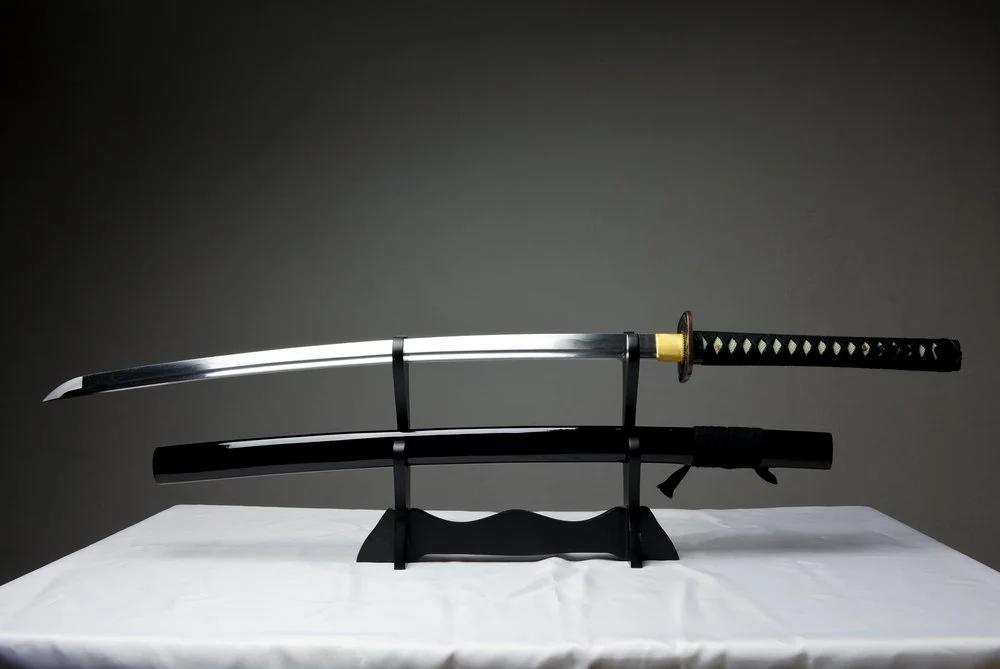The katana is the signature sword of Feudal Japan’s Samurai warriors. It was forged from high-quality steel, called tamahagane, that was heated and hammered repeatedly to create its famous layered impression known as Hamon.
The smith then cooled the blade by quenching it in water. After cooling, the smith used a light hammer to straighten the Mune and Nakago.
Origins
The katana was developed in the Heian period (794 to 1185 AD) during a time of cultural growth and political transition. Its predecessor, the tachi, had been the sword of choice among Japan’s military nobility. But as the nature of warfare shifted from mounted combat to closer-quarters engagements, the need for a more versatile and easily drawn weapon became apparent.
The curved, single-edged blade of the katana was designed to meet this need. Traditional katana were made of tamahagane, a steel forged from iron sand and charcoal in a clay tatara furnace. This unique composition gives the blade a combination of hardness and flexibility. The wavy lines along the hamon are a visual indication of this special heat treatment process. This distinctive feature is what distinguishes the katana from other swords.
Function
A katana, as a sword for double-handed use, needs to be both light and strong. Hence, its construction and design is a feat of engineering.
To achieve this, the block of tamahagane is mixed with softer shingane steel. The new composite steel is then heated and rapidly cooled, producing the hard, sharp edge of the sword and its softer spine. The line between these two different zones of the blade – which shows up as the beautiful and distinct pattern known as hamon – is not only aesthetic but has real practical benefits in combat.
This is because the smith must ensure that the thicker back of the blade curves upward to meet the thinner edge. The shape of the tip, whether long (okissaki), medium (chukissaki) or short and curved (ikuri-okissaki), is also determined at this stage.
Techniques
A samurai sword requires a certain amount of skill and devotion. Its construction is a sacred process, deeply rooted in the cultural and spiritual beliefs of Japan.
A sword is made by combining two layers of metals, with the hard outer skin, or kawagane, wrapped around the softer iron core, or shingane. This combination creates a stronger blade that can resist stress.
The next step is to hammer the material into its final form. Then the smith welds the edges together to create a solid, strong blade.
Samurai also practiced kenjutsu, an art of drawing and cutting with the katana. But this art emphasized attacking and not blocking or parrying. This is because katanas were too long for effective parrying. So, samurai used the thick back of the blade (mune) to ward off an attack.
Materials
During the swordmaking process, impurities are removed from the raw iron through fire. This process gives the smith control over the steel’s quality. The smith creates layers of different types of metal that give the blade its strength and flexibility. The mixture of the two kinds of metal is called Tamahagane, and it is important that these layers have a compatible balance between hardness and ductility.
The smith then grinds the edge of the tamahagane to create a sharp, razor-sharp cutting surface. He also adds file marks to the tang of the sword called Higaki. These marks give the katana a unique traditional pattern.
The samegawa is wrapped with a layer of Ito. This is a traditional material made of the dried skin of a stingray. It is tough, course and grippy. Modern ito can be made of cotton, leather or synthetic materials. It is layered with Menuki, which are ornaments that decorate the handle of the katana.
History
Katana were used by warriors to fight. The samurai regarded them as sacred treasures and valued artistic qualities of the sword fittings (Koshirae).
This distinctive design emerged during the Heian period, when the use of tachi became less popular due to changes in warfare tactics that shifted from mounted combat to close-quarters engagements. Its curved blade and long grip allow for two-handed holding.
The blades are made of a combination of steels, to achieve greater hardness and durability. They feature a characteristic wavy line known as Hamon, a result of differential quenching that fuses the rigid edge to the more elastic body and spine. Swordsmiths also polish the blade using a series of progressively finer stones to enhance its beauty and strength. When complete, the katana is fitted with a hilt and scabbard.find out more information

